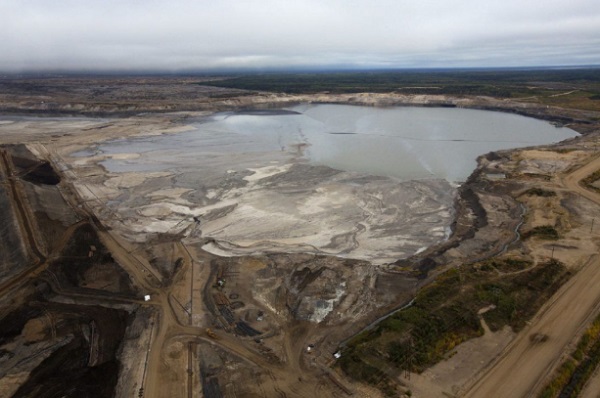Energy
Majority of Canadians Support Canada’s Role as Responsible Energy Producer & Exporter: POLL

A new poll has found that a growing number of Canadians support our country’s role as a responsible and reliable global energy producer and exporter.
According to the poll – conducted by Research Co. on behalf of Canada Action – a majority of Canadians, nearly three out of four (73% of respondents), believe Canada’s liquefied natural gas (LNG) can help improve global energy security and sustainability efforts.
The poll questioned 1,000 adults online across the country and found that most respondents have an overwhelmingly positive view of the energy sector. Other findings include:

> 80% of respondents – or four-in-five Canadians – said that given global energy demand is forecasted to grow 50% by 2050, they support trade in all Canadian energy technologies including solar, wind, hydro, hydrogen, geothermal, biofuels, and oil and gas.
> 79% of respondents – or nearly eight-in-ten Canadians – said they prefer to use Canadian energy in their day-to-day lives.
> 75% of respondents – or three-in-four Canadians – agree that exporting our responsible and reliable energy, expertise and technology to reduce global greenhouse gas (GHG) emissions is one way Canada can play an important role in addressing climate action. This is a one per cent increase since the question was asked in March.
> 73% of respondents – or nearly three-quarters of Canadians – agree that our country should advocate for Canada’s energy sector as a leader in environmentally sustainable production.
> After having been informed that from 2000 to 2019, the emission intensity of Canada’s oil sands operations dropped by approximately 33% due to technological and efficiency improvements, 73% of respondents – or almost three-in-four Canadians – agree we should advocate for Canada’s energy sector as a leader in environmentally sustainable production.
> 63% of respondents – or more than three-in-five Canadians – agree that investing in Canada’s oil and gas sector makes sense if you value climate leadership, social progress and transparency.
> 56% of respondents think its wrong for Canada to forfeit energy opportunities to other countries with higher emissions in regards to LNG – representing a rise in public support of 5% since the last poll in March 2022.
“These latest polling results confirm exactly what we’ve found in our media interviews, community events, social media engagements and public interactions over the last number of months,” said Cody Battershill, Founder and Chief Spokesperson of Canada Action.
“Canadians are coming to understand the world will need oil and gas long into the future, and so Canada should continue to play a strong role as a country that respects workers, families and Indigenous and non-Indigenous communities, and that adheres to the strictest environmental, health and safety regulations in the world,” Battershill added.
The World Needs More Canadian Resources

Canada Action’s latest poll comes amid an ongoing global energy crisis where many countries have asked us for more of what we have: natural gas, hydrogen, minerals and metals, and other critical resources.
As one of the most responsible natural resource producers on the planet, it only makes sense that we provide the world with as much of these commodities as possible while following the world-class sustainability methods and standards our country is known for.
Canada is at a crossroads: either step up to help our closest allies and trade partners in need of our resources, or lose global market share – and the economic and environmental opportunities that come with – to suppliers with fewer protections for human rights and the environment.
A majority of Canadians across the country see the benefits of more Canadian resources on global markets. It’s time our country put its full support behind developing LNG, forestry, mining, oil and other natural resource sectors to benefit our families and the global climate.
About Us
Canada Action is a non-partisan national coalition that advocates for the responsible development of Canada’s various natural resources, for the industries that move that development forward, and for the workers, families and communities the sector supports.
The poll’s margin of error, which measures sample variability, is plus or minus 3.1 percentage points, nineteen times out of twenty.
For more information: Cody Battershill – (403) 370-4008 – [email protected]
Daily Caller
‘Not Held Hostage Anymore’: Economist Explains How America Benefits If Trump Gets Oil And Gas Expansion


From the Daily Caller News Foundation
Economist Steve Moore appeared on Fox Business Tuesday to discuss what he called the significance of expanding domestic oil and gas production in the United States.
President Donald Trump’s Executive Order 14154 aims to secure U.S. energy independence and global leadership by awarding 10-year oil and gas leases. During an appearance on “The Bottom Line,” Moore said that if Trump’s energy policies succeed then America will no longer have to rely on foreign oil.
“If Trump goes forward with what he wants to do, and our energy secretary is all in on this, produce as much oil and gas as we can here at home in Texas and North Dakota and Oklahoma and these other states. Then we’re not held hostage anymore to what’s happening in the Middle East,” Moore said. “That’s what’s so frustrating. We have more of this stuff than anybody does.”
WATCH:
Moore then pointed to some of former President Joe Biden’s early decisions, particularly the cancellation of pipelines. Moore said these actions left the U.S. vulnerable to external energy crises.
“I don’t want to overemphasize the Strategic Petroleum Reserve. It’s good that we have this sort of safety knot in case you have some kind of blow up in the Middle East, like we have now. But, ultimately, what Joe Biden did was the most sinister of all,” Moore said. “You guys remember what was the first thing when he became president? He canceled pipelines. He destroyed our energy infrastructure.”
During his first term, Trump signed executive orders to advance major pipelines, including instructing TransCanada to resubmit its application for a cross-border permit for the Keystone XL Pipeline, which is designed to transport oil from the tar sands of Alberta, Canada to refineries on the Gulf Coast. On his first day in office, Biden revoked the permit for the Keystone XL Pipeline, effectively halting its development.
Alberta
Alberta is investing up to $50 million into new technologies to help reduce oil sands mine water

Technology transforming tailings ponds
Alberta’s oil sands produce some of the most responsible energy in the world and have drastically reduced the amount of fresh water used per barrel. Yet, for decades, operators have been forced to store most of the water they use on site, leading to billions of litres now contained largely in tailings ponds.
Alberta is investing $50 million from the industry-funded TIER system to help develop new and improved technologies that make cleaning up oil sands mine water safer and more effective. Led by Emissions Reduction Alberta, the new Tailings Technology Challenge will help speed up work to safely reclaim the water in oil sands tailing ponds and eventually return the land for use by future generations.
“Alberta’s government is taking action by funding technologies that make treating oil sands water faster, effective and affordable. We look forward to seeing the innovative solutions that come out of this funding challenge, and once again demonstrate Alberta’s global reputation for sustainable energy development and environmental stewardship.”
“Tailings and mine water management remain among the most significant challenges facing Alberta’s energy sector. Through this challenge, we’re demonstrating our commitment to funding solutions that make water treatment and tailings remediation more affordable, scalable and effective.”
As in other mines, the oil sands processing creates leftover water called tailings that need to be properly managed. Recently, Alberta’s Oil Sands Mine Water Steering Committee brought together industry, academics and Indigenous leaders to identify the best path forward to safely address mine water and reclaim land.
This new funding competition will support both new and improved technologies to help oil sands companies minimize freshwater use, promote responsible ways to manage mine water and reclaim mine sites. Using technology for better on-site treatment will help improve safety, reduce future clean up costs and environmental risks, and speed up the process of safely addressing mine water and restoring sites so they are ready for future use.
“Innovation has always played an instrumental role in the oil sands and continues to be an area of focus. Oil sands companies are collaborating and investing to advance environmental technologies, including many focused on mine water and tailings management. We’re excited to see this initiative, as announced today, seeking to explore technology development in an area that’s important to all Albertans.”
Quick facts
- All mines produce tailings. In the oil sands, tailings describe a mixture of water, sand, clay and residual bitumen that are the byproduct of the oil extraction process.
- From 2013 to 2023, oil sands mine operations reduced the amount of fresh water used per barrel by 28 per cent. Recycled water use increased by 51 per cent over that same period.
- The Tailings Technology Challenge is open to oil sands operators and technology providers until Sept. 24.
- The Tailings Technology Challenge will invest in scale-up, pilot, demonstration and first-of-kind commercial technologies and solutions to reduce and manage fluid tailings and the treatment of oil sands mine water.
- Eligible technologies include both engineered and natural solutions that treat tailings to improve water quality and mine process water.
- Successful applicants can receive up to $15 million per project, with a minimum funding request of $1 million.
- Oil sands operators are responsible for site management and reclamation, while ongoing research continues to inform and refine best practices to support effective policy and regulatory outcomes.
Related information
-

 Health2 days ago
Health2 days agoLast day and last chance to win this dream home! Support the 2025 Red Deer Hospital Lottery before midnight!
-

 conflict2 days ago
conflict2 days ago“Evacuate”: Netanyahu Warns Tehran as Israel Expands Strikes on Iran’s Military Command
-

 Energy1 day ago
Energy1 day agoKananaskis G7 meeting the right setting for U.S. and Canada to reassert energy ties
-

 Business1 day ago
Business1 day agoCarney’s Honeymoon Phase Enters a ‘Make-or-Break’ Week
-

 Energy2 days ago
Energy2 days agoCould the G7 Summit in Alberta be a historic moment for Canadian energy?
-

 Aristotle Foundation2 days ago
Aristotle Foundation2 days agoThe Canadian Medical Association’s inexplicable stance on pediatric gender medicine
-

 Alberta1 day ago
Alberta1 day agoAlberta announces citizens will have to pay for their COVID shots
-

 conflict1 day ago
conflict1 day agoIsrael bombs Iranian state TV while live on air







